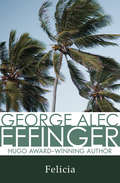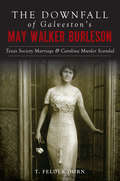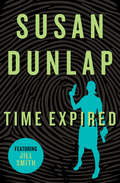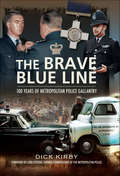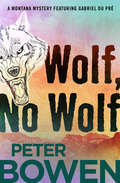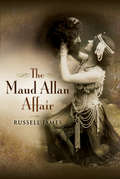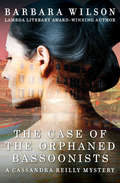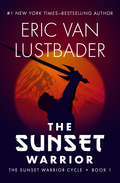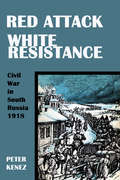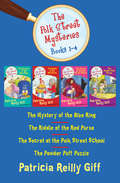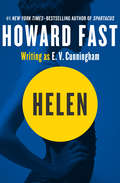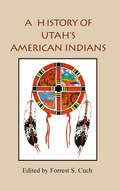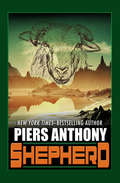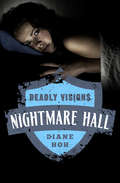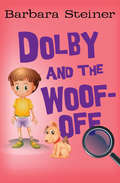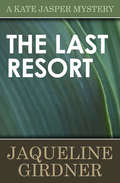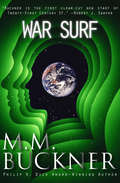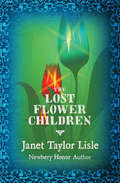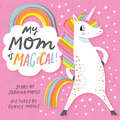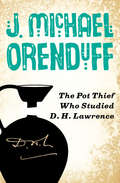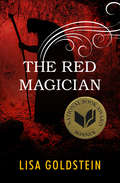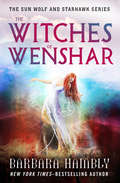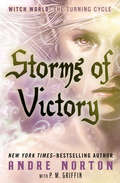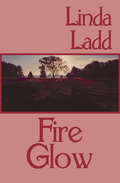- Table View
- List View
Felicia
by George Alec EffingerSomeone&’s about to rip off a sleepy little Louisiana town! Chuck&’s gang of truckers are geared for looting. When Tom masterminds a false hurricane alert…When sheriff Boshardt orders an evacuation of the town…When Chuck moves in to strip the town clean…Their cool caper escalates into a devastating triple-cross that rips the rooftops off everything from Miami to New Orleans—and nothing—no one will ever be the same!
The Downfall of Galveston's May Walker Burleson: Texas Society Marriage & Carolina Murder Scandal (True Crime)
by T. Felder Dorn&“The story of May Walker Burleson&’s murder of her ex-husband&’s second wife . . . A meticulously researched work, [it] captures its era perfectly.&”—Galveston County Daily News Jennie May Walker Burleson was envied for having everything a woman of her time could want—the privileged upbringing, the dazzling good looks, the dashing war hero husband. She was admired for demonstrating that a woman could want more, from the front of the 1913 Woman Suffrage Procession to the bottom of a Mesoamerican archaeological dig. But as she stood over the body of her husband&’s second wife, gun in hand, society&’s envy and admiration quickly hardened into pity and scorn. T. Felder Dorn examines the complicated trajectory of her life as socialite, suffragist and shooter. Includes photos! &“Dorn&’s book gives small glimpses of history, especially on the 1913 Suffragist parade in Washington, DC. Plus, May was sent to Waverly Hills Sanatorium reputed to be one of the most haunted places in the U.S. One of the best features of the book is the historical photos interspersed with each chapter.&”—Forgotten Winds
Time Expired: A Jill Smith Mystery (The Jill Smith Mysteries #8)
by Susan DunlapWhen a rash of pranks on the city&’s meter maids turns deadly, Jill Smith isn&’t amused Two witnesses see the man drag the old woman into a canyon while brandishing a rifle. As night falls, detective Jill Smith and the Berkeley police department set up a perimeter. The canyon is a hostage negotiator&’s nightmare—dark, rough, and full of escape routes—and when she finally opens communication, the gunman doesn&’t respond. Rather than wait for dawn, Jill leads her team into the darkness. At the bottom of the canyon they find a battered old mannequin and a box of stolen parking tickets. The entire incident was another skirmish in one man&’s ongoing war to humiliate the city&’s meter maids. Interviewing the residents on the canyon&’s lip, Jill meets Madeleine Riordan, retired attorney and legendary firebrand She seems to know something, but refuses to tell until the next day. When Jill returns, the woman has been murdered, and Jill suspects that the prankster may have lost his sense of humor.This ebook features an illustrated biography of Susan Dunlap including rare images from the author&’s personal collection.
The Brave Blue Line: 100 Years of Metropolitan Police Gallantry
by Dick KirbyIn their daily battle against a remorseless tide of crime, officers of Londons Metropolitan Police routinely risk their lives protecting the Capital. In The Brave Blue Line Dick Kirby, the former Scotland Yard detective turned popularcrime author, has brought together a superb collection of inspiring stories of police gallantry over the last hundred years.Officers to be honoured with the George Cross, the highest civilian award, have their stories told including Jim Beaton who saved Princess Anne from kidnap in The Mall.Three women officers have been awarded the George Medal, two for decoy work, the third for a heroic rooftop rescue.The book concludes with the astonishing story of a retired detective who tackled armed robbers at the cost of his eye. He may have left the Met behind him but not his courage.Every page of this gripping book with its thrilling and well researched accounts of outstanding acts of gallantry by policemen and women makes for inspiring reading. This is crime writing of the highest order.
Wolf, No Wolf (The Montana Mysteries Featuring Gabriel Du Pré #3)
by Peter BowenA half-Indian, half-French deputy with &“a shrewd mind and wry sense of humor&” investigates a case of homicide on the range (The New York Times Book Review). Two men have been cutting fences at the ranches of Toussaint, Montana, loosing thousands of dollars&’ worth of cattle to use as target practice for their .22 rifles. Are they thieves? Pranksters? Local cattle inspector and sometime deputy Gabriel Du Pré guesses they&’re environmentalists, agitating for the reintroduction of native wolves to Montana&’s high plains. Du Pré knows the perpetrators are trying to send a message to the ranchers of eastern Montana—he also has a hunch they&’re already dead. When the activists are indeed found shot to death, Du Pré must figure out who used them for target practice. The FBI descends, but their agents are as clueless in this territory as the hapless victims were. Clearly, one of Toussaint&’s citizens committed this crime, killing to protect the traditional way of ranching life, a loyalty Du Pré shares. But if anyone&’s going to arrest his people, it will be the cattle inspector himself . . . Wolf, No Wolf is the third in &“a wonderfully eclectic and enjoyable series of interest to western crime readers, especially those favoring Montana authors C. J. Box, Craig Johnson, and Keith McCafferty as well as fans of the Hillermans&” (Booklist).Wolf, No Wolf is the 3rd book in The Montana Mysteries Featuring Gabriel Du Pré series, but you may enjoy reading the series in any order.
The Maud Allan Affair
by Russell JamesMaud Allan, the famous exotic dancer was destroyed by the infamous libel trial brought by charismatic British Member of Parliament. and pilot, Noel Pemberton-Billing.In this wonderfully written book, Russell James charts her rise and fall from the days when she saved the 1908 London Olympics from failure to the outrageous miscarriage of justice of her trial which knocked the dark days of the First World War off the front pages of the national newspapers.In his gripping narrative, Russell seamlessly moves from the days when Maud was courted by society to the end when her friends, apart from former PMs wife, Margot Asquith, shunned her in case they, too, were labeled as sexual deviants. The trial was based on the existence of the notorious (and fictional?). German black book and its list of 47,000 sexually depraved people who could be used by the Germans to defeat the British in War. Names included Herbert and Margot Asquith and the judge himself. Maud Allan did not stand a chance.A fantastic read brought out in time for the 2008 Beijing Olympics which will be looking ahead to the next London Olympics, in four years time.
The Case of the Orphaned Bassoonists: Gaudí Afternoon, Trouble In Transylvania, The Death Of A Much-travelled Woman, And The Case Of The Orphaned Bassoonists (The Cassandra Reilly Mysteries #4)
by Barbara WilsonCassandra Reilly travels to Venice to solve the mystery of a missing bassoon, and lands in the midst of an international cast of characters who all have something to hideAt the Venice-based symposium on women musicians of Vivaldi&’s time, an instrument has gone missing: an antique bassoon, an invaluable family heirloom—and bassoonist Nicky Gibbons stands accused of the theft. Determined to clear her name, Nicky calls Cassandra Reilly—lesbian translator and part-time sleuth extraordinaire—and summons her to the City of Water. Fifteen scholars and musicians are attending the symposium, and each has a multitude of quirks and secrets—as well as motive to steal the bassoon. As Cassandra investigates, she immerses herself in the world of Baroque music, the tangle of personal intrigues at the symposium, and a second mystery involving the orphaned bassoonists of eighteenth-century Venice.Wry, intelligent, and atmospheric, The Case of the Orphaned Bassoonists is the fourth and final book in the Cassandra Reilly Mystery series, which begins with Gaudí Afternoon, Trouble in Transylvania, and The Death of a Much-Travelled Woman.
The Sunset Warrior: Book Three Of The Sunset Warrior Cycle (The Sunset Warrior Cycle #1)
by Eric Van LustbaderFirst in the Sunset Warrior cycle: &“Vivid sword and sorcery adventure&” from the #1 New York Times–bestselling author of The Ninja (Publishers Weekly). Centuries after an ecological calamity turned the surface of the world to ice, mankind has retreated beneath the earth&’s crust. In the contained environment of the Freehold, civilization reverts to feudalism and lords known as Saardin maintain their grip on power through the strength of their Bladesmen. Among these subterranean samurai is Ronin, an unaffiliated warrior who lives by his blade alone. When war threatens to engulf the Freehold, this wandering fighter will be called on to save mankind. As battle draws near, Ronin attempts to stay out of the conflict. But in an environment as claustrophobic as this crumbling underground shelter, neutrality is impossible. To prevent what remains of humanity from destroying itself in an underground war, the Bladesman will embark on a quest that takes him to the frozen surface of a forgotten world to feel for the first time the heat of the sun.
Red Attack, White Resistance: Civil War in South Russia, 1918
by Peter KenezThe first of a two-volume history and analysis of the Russian Civil War, this volume covers events in 1918.“The republication of Professor Kenez’s classic volumes is to be warmly welcomed. Based on copious archival research and a close reading of published memoirs and mixing careful narrative with judicious analysis, they still provide the definitive history of the anti-Bolshevik movement in South Russia. Their original publication provided an inspiration for a generation of scholars of the Russian Civil War; the new edition will certainly inspire another. The armchair historian too, as well as all those interested in the fate of contemporary Russia, will find much to admire and much to ponder upon in this well told tale of one of the most bloody and tragic episodes in recent European history.” —Jonathan D. Smele, University of London “The profession will be delighted to learn that this classic study of the Russian Civil War (1917-21) on its most crucial battleground is again available. Kenez’s work was the first in any language to cut through the rhetoric of partisan memory and historiography in order to present a complicated and balanced view of both sides. While demythologizing Soviet historical explanations, Kenez is especially keen in displaying the enormous variety of the “White,” or anti-Communist, movement and analyzing the causes of its defeat.” —Richard Stites, Georgetown University
The Polk Street Mysteries Books 1–4: The Mystery of the Blue Ring, The Riddle of the Red Purse, The Secret at the Polk Street School, and The Powder Puff Puzzle (The Polk Street Mysteries #4)
by Patricia Reilly GiffSecond-grader Dawn Bosco must put her detective skills to the test in these four mysteries at the Polk Street SchoolThe Mystery of the Blue Ring Dawn Bosco and Emily Arrow used to be best friends, until Dawn took Emily&’s unicorn. Even though Dawn eventually gave it back, Emily still won&’t talk to her. When Emily&’s blue birthday ring goes missing after art class, the rest of the second grade accuses Dawn of stealing it. Dawn sets out to solve the mystery herself to prove she is innocent—and maybe get her best friend back. The Riddle of the Red PurseWhen Dawn finds a red purse on the playground after school one day, she knows she&’s also found a new mystery to solve. But after she puts up posters and makes an announcement on the loudspeaker, too many people are trying to claim the purse! The only clues are a shopping list, some money, and some dust that looks like cookie crumbs. Dawn will have to figure out the riddle of the purse&’s odd contents to find its rightful owner. The Secret at the Polk Street SchoolMs. Rooney&’s second-grade class is determined to win the school contest by putting on a surprise play. Dawn Bosco will play Little Red Riding Hood, and Jason Bazyk will be the Big Bad Wolf. But someone is trying to ruin everything. First, Dawn hears a scary voice backstage. Then, the wolf suit goes missing. Dawn has to get to the bottom of the mystery in order to save the play and win the prize. The Powder Puff PuzzleOne hot summer day, Dawn&’s cat, Powder Puff, jumps into an open car window. Before Dawn can catch up, the driver speeds off! Dawn is sad, but she knows she&’s a great detective. It&’s up to the Polka Dot Private Eye to track down the car, the driver, and Powder Puff.
Helen
by Howard FastA lawyer scrambles to save a judge-killing hooker from the gallows No women have been hanged in San Verdo since 1921, but after four decades it looks like that&’s about to change. Helen Pilasky is far from a sympathetic defendant. She&’s a known prostitute, and there is strong evidence that she murdered Judge Alexander Knowton, a supreme court justice beloved statewide. More than one hundred thousand people live in San Verdo, and nearly all of them want Helen Pilasky&’s neck. It is Blake Eddyman&’s job to save her. A well-off lawyer whose once promising career has stalled, Blake is caught between his ambition and his fear of failure. Saving Helen seems impossible, but he can&’t refuse the job. She faces a charge of murder in the first degree. If convicted, the sentence is automatic. Only Blake stands between this enigmatic young woman and the hangman. This ebook features an illustrated biography of Howard Fast including rare photos from the author&’s estate.
A History of Utah's American Indians
by Forrest S. CuchA comprehensive history of the six Native American tribes of Utah, from an Indigenous perspective.The valleys, mountains, and deserts of Utah have been home to native peoples for thousands of years. Like peoples around the word, Utah&’s native inhabitants organized themselves in family units, groups, bands, clans, and tribes. Today, six Indian tribes in Utah are recognized as official entities. They include the Northwestern Shoshone, the Goshutes, the Paiutes, the Utes, the White Mesa or Southern Utes, and the Navajos (Dineh). Each tribe has its own government. Tribe members are citizens of Utah and the United States; however, lines of distinction both within the tribes and with the greater society at large have not always been clear. Migration, interaction, war, trade, intermarriage, common threats, and other challenges have made relationships and affiliations more fluid than might be expected.In this volume, the editor and contributors endeavor to write the history of Utah&’s first residents from an Indian perspective. An introductory chapter provides an overview of Utah&’s American Indians and a concluding chapter summarizes the issues and concerns of contemporary Indians and their leaders. Chapters on each of the six tribes look at origin stories, religion, politics, education, folkways, family life, social activities, economic issues, and important events. They provide an introduction to the rich heritage of Utah&’s native peoples. This book includes chapters by David Begay, Dennis Defa, Clifford Duncan, Ronald Holt, Nancy Maryboy, Robert McPherson, Mae Parry, Gary Tom, and Mary Jane Yazzie.This book is a joint project of the Utah Division of Indian Affairs and the Utah State Historical Society. It is distributed to the book trade by Utah State University Press.
Shepherd: To Be A Woman, Shepherd, Fly Trap, And Awares (Metal Maiden #2)
by Piers AnthonyThe second in a New York Times–bestselling author&’s wildly imaginative series about the nature of consciousness, set on a planet of unusual animals. When Shep participates in the student exchange program, he finds himself in the body of a man on a rustic colony planet. Then a native sheep comes to the door. It seems Shep must become a literal shepherd, to his dismay. These are very special sheep, deadly, telepathic, and precognitive, and their will governs. They also recruit a Vulture, a Python, and a lovely Elf girl for a dangerous journey. Then things get interesting. Soon Shep is deep in adventure and love. But he can&’t marry a native girl by proxy. Or can he? The most important thing he learns is to trust the sheep, no matter how wild it gets. Even when he returns to Earth . . .
Deadly Visions (Nightmare Hall #20)
by Diane HohRachel is haunted by terrifying visions of death—and all of them are coming trueRachel Seaver is having visions. In a tranquil seascape painting, she sees a terrified woman drowning in the ocean waves. That night, she has a dream in which a student she barely knows is murdered. The next day, she finds out he&’s dead—the victim of a drowning. In a still-life painting of a vase of flowers, Rachel sees someone tumbling down a steep flight of metal stairs. The same night, a poet falls down the fire escape at Nightingale Hall.Rachel&’s visions keep getting worse as her mind&’s eye paints terrifying pictures of murder. And then she starts receiving death threats that claim she won&’t live to see another Monday.Someone is watching Rachel . . . watching and waiting . . . A stone-cold killer with the perfect canvas on which to immortalize her forever.This ebook features an illustrated biography of Diane Hoh including rare photos and never-before-seen documents from the author&’s personal collection.
Dolby and the Woof-Off (Oliver Dibbs #3)
by Barbara SteinerBo is determined to help his dog, Dolby, win the starring role in a dog-food commercial, but will Dolby be up to the challenge? Bo Dibbs wants to be just like his older brother, Oliver, who is always in the newspaper for his accomplishments, like saving a prairie dog habitat and getting the stegosaurus declared the state fossil of Colorado. When Bo finds out that Woofies Dog Food is hosting a &“Woof-Off&” contest to find a canine star for their new commercials, he realizes this is his chance to become famous. He decides to train the family dog, Dolby, to perform in the upcoming competition. With Dolby the Wonder Dog by his side, Bo knows he can&’t go wrong!Dolby is a fast learner, and Bo is excited to show off his talent. Who says old dogs can&’t learn new tricks? But when things don&’t go as planned, Bo discovers that it&’s much harder for old dogs to unlearn new tricks!
The Last Resort (The Kate Jasper Mysteries #2)
by Jaqueline GirdnerKate Jasper, Marin County, California&’s own organically grown amateur sleuth, is back in this second mystery in the series.The good news in The Last Resort is that Kate has finally divorced her husband, Craig, and is enjoying a platonic friendship with her now ex‑husband, happy in her own new love life. The bad news is that Craig has been dating his divorce attorney, Suzanne Sorenson. Suzanne is everything Kate is not: tall, blond, elegant, ambitious, and ruthless. And now, Suzanne is dead as well, strangled on her late night jog while vacationing with Craig at a vegetarian health resort. Craig is suspected of Suzanne&’s murder by the local police and begs Kate to help exonerate him. Kate reluctantly agrees and checks herself into Spa Sante to investigate. Raw vegetables were never so dangerous.
War Surf
by M. M. BucknerA rich, jaded thrill seeker is drawn into a vicious competition in this &“innovative and exciting&” novel by a Philip K. Dick Award winner (C. J. Cherryh). It&’s the twenty-third century and Nasir Deepra is 248 years old. A wealthy corporate executive kept young by all-pervasive nanotechnology, he is nearly bored to death. To spice things up he has become an Agonist, dipping into war zones—many of them in satellites orbiting the Earth—and filming his daredevil antics. Agonists revel in the attention of their large fan base who watch the thrill sport on the Net. Then a war surf goes badly and the Agonists lose their top ranking amongst surfers—so they decide to up the ante and go to Heaven, a class ten difficulty war zone, the toughest, in order to get back on top. Nasir is reluctant, since he&’s on the board of directors that controls Heaven and he knows why it&’s a class ten. But his girlfriend talks him into it, and he soon finds himself paying a price for the brutal exploitation he has been a part of . . . In this &“thrilling, entertaining romp through a corporate-ruled world&” (Booklist), the author of Hyperthought and Watermind &“hits another homerun . . . action, character, drama, and great science—it&’s all here&” (Robert J. Sawyer).
Evil Returns (The Vampire's Promise #2)
by Caroline B. CooneyDevnee just wants to be beautiful—but is she willing to pay the price?Devnee is so excited about having a bedroom in an attic tower. A tower sounds so romantic, like living in a private castle. Devnee hopes her new room will make her romantic—beautiful, popular, and even happy. But the tower feels inexplicably creepy, especially because its windows are tightly shuttered. On Devnee&’s very first night in her new room, weird things start to happen. A disembodied hand appears outside her window, with long silver fingernails that Devnee can&’t help but long to touch. Devnee&’s shadow detaches from her body and starts wandering the edges of her new room by itself. On her first day at her new high school, Devnee finds herself intensely wishing her life were different. And when someone—something—arrives in her tower room to make that wish come true, Devnee&’s best intentions at starting a new life take a dark turn. In the second book in Caroline B. Cooney&’s Vampire&’s Promise trilogy, evil finds another vulnerable girl . . . This ebook features an illustrated biography of Caroline B. Cooney including rare images and never-before-seen documents from the author&’s personal collection.
The Lost Flower Children
by Janet Taylor LisleTwo grieving sisters resolve to break a spell cast by evil fairiesAfter the death of their mother, Olivia and Nellie are shipped off to their great-aunt&’s house for the summer. Nine-year-old Olivia is not excited about the trip—she has to keep one eye on kind but eccentric Aunt Minty and the other on her younger sister, Nellie, who&’s been behaving oddly. But the summer takes an interesting turn when Olivia discovers an old fairy tale: the story of a group of children who, at a garden tea party, are turned into flowers. The garden sounds an awful lot like the one at Aunt Minty&’s house—could the flower children be real? If Olivia and Nellie can only locate the old tea set from the story, they might be able to break the spell.
My Mom Is Magical
by Sabrina MoyleThe creators behind the greeting card and design studio Hello!Press share a joyful tribute to moms in this delightfully illustrated children’s book.Is your mom more amazing than a billion butterflies? More sparkly than a universe of stars? Sweeter than a cloud of cotton candy? Then this book is definitely for you!From Eunice and Sabrina Moyle, the creative team behind Hello!Press, this children’s book celebrates all the things that make Mom magical. Each page reveals whimsical artwork and a delightful, imaginative message that children—and their Moms—will love.
The Pot Thief Who Studied D. H. Lawrence: The Pot Thief Who Studied Escoffier, The Pot Thief Who Studied D. H. Lawrence, And The Pot Thief Who Studied Billy The Kid (The Pot Thief Mysteries #5)
by J. Michael OrenduffA pottery mystery that&’s &“perfectly delightful and funny . . . full of engaging characters, fast dialogue, and tasty descriptions of the New Mexico culture&” (Kings River Life Magazine). Eighty years ago, D. H. Lawrence moved to Taos to make a home for himself in the mountains of New Mexico. To welcome the famed writer, his neighbor brought over a stew and left the container as a gift. But this was no Tupperware—it was a handcrafted pot made in the ancient tradition by one of the finest craftswomen of her generation. Decades later, the neighbor&’s great-grandson wants it back, and there is no one in New Mexico better at stealing artifacts than Hubie Schuze. In exchange for three priceless pots, Hubie agrees to search the Lawrence ranch for the long-lost stew vessel. But when a blizzard descends on the estate, trapping Hubie and other guests indoors with a killer, the pot thief finds himself facing a mystery so shocking it would make Lady Chatterley blush.The Pot Thief Who Studied D. H. Lawrence is the 5th book in the Pot Thief Mysteries, but you may enjoy reading the series in any order.
The Red Magician
by Lisa GoldsteinWinner of the National Book Award: In the shadow of the Holocaust, a young girl discovers the power of magic In the schoolroom of a simple European village, Kicsi spends her days dreaming of the lands beyond the mountains: Paris and New York, Arabia and Shanghai. When the local rabbi curses Kicsi&’s school for teaching lessons in Hebrew, the holy tongue, the possibility of adventure seems further away than ever. But when a mysterious stranger appears telling stories of far-off lands, Kicsi feels the world within her grasp. His name is Vörös, and he is a magician&’s assistant who seems to have powers all his own. There is darkness growing at the edge of the village—a darkness far blacker than any rabbi&’s curse. Vörös warns of the Nazi threat, but only Kicsi hears what he says. As evil consumes a continent, Vörös will teach Kicsi that sometimes the magician&’s greatest trick is survival.
The Witches of Wenshar (The Sun Wolf and Starhawk Series #2)
by Barbara HamblyFrom a New York Times–bestselling author, the tale of a mercenary who must master his newfound magic to battle a powerful evil. After a lifetime of brutal war, which he survived only through strength and daring, the mercenary Sun Wolf was shocked to discover within himself an inclination toward magic. Accompanied by his lieutenant, Starhawk, he travels across the forbidding desert to the land of Wenshar, where witchcraft is said to flourish. There he seeks out a witch with powers far beyond her years, who is rumored to have mastered the ancient art of white magic. But when he and Starhawk finally reach her, there is evil in the air—an evil against which all their might is useless. Sun Wolf must learn to harness his newfound powers—or be taken by this sinister trap. This ebook features an illustrated biography of Barbara Hambly, including rare photos and never-before-seen documents from the author&’s personal collection.
Storms of Victory: The Turning #1) (Witch World: The Turning Cycle #1)
by Andre Norton P. M. GriffinTwo full-length novels of the Witch World, set in the time of the greatest and most terrible cataclysm in its history: the Turning. Long ago, the realm of the Witch World was in mortal peril from ruthless, seemingly unstoppable invaders. In a final, desperate bid for salvation, all of the witches of Escarp combined their strength and moved the very mountains to stop the enemy. But in doing so, they forever changed the face of their world, sacrificing themselves and unleashing long-dormant powers upon the lands. Here, in one volume, are two thrilling tales of that chaotic time . . . Port of Dead Ships by Andre Norton: Destree m&’Regnant is an outcast amongst the Sulcars, due to the strange circumstances of her birth and her unsettling ability to see the future. But when she joins an expedition south across the sea, her gifts may be the only thing that can save her and her shipmates when an ancient evil that ensnares souls sets its dark eye upon them. Sea Keep by P. M. Griffin: The proud, rough-hewn Falconers and the haughty nobles of the Dales have little to do with each other. But when a fleet of marauding pirates begins ravaging the Dales, the two peoples must look beyond their differences to face their common foe.
Fire Glow
by Linda LaddA battle of wills between an 18th-century pirate and her captor stirs up the high seas in this historical Caribbean romance from the award-winning author. Beneath the fiery gaze of her captor, Caitlin finds herself bound by the only enemy she could not defeat—her passionate nature. Caitlin, the renegade female pirate plundering Spanish galleons on the high seas, initially despised Trey Cameron, the man commissioned by the queen to tame her. As he forces her to conform to an appropriately feminine role, wearing gowns and performing the tasks of housekeeper, Caitlin vows to avenge herself. She will rule the waves again . . . free of the restraining hand of any man. As the lush green of the Caribbean brings them to tumult, Trey and Caitlin find themselves locked in a fiery battle of wills. Will they surrender to the refuge of each other's arms—or tear each other apart in the frustration of unrequited love?
